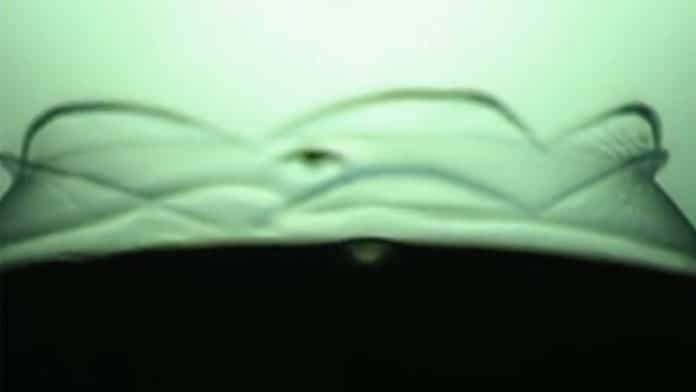The formation of bubbles and their rupture in many areas during manufacturing and transporting fluids can cause several issues in product quality. Bubbles are a common occurrence and are often difficult to resolve.
To study how different kinds of bubbles pop, a team of scientists at Stanford started understanding the puzzling science behind bubbles.
They mainly focused on bubbles with proteins embedded on their surfaces. Unpredictably, they found that the protein bubbles opened up like flowers when popped with a needle. This is surprising.
This study has significant applications in fields from medicine and vaccine production to oil transportation.
Bubble popping can happen in several ways. It depends on the property of the bubble. One such important property is viscoelasticity. Viscoelastic bubbles with both liquid- and solid-like properties deform and pop in shapes that mimic a blooming flower. But it’s pretty impossible to see how this phenomenon takes place.
In this study, scientists made that possible by using high-speed cameras operating at 20,000 frames per second to capture and study the phenomenon.
Ph.D. student Aadithya Kannan said, “While working on my thesis on bubble coalescence in biologic drug formulations, I decided to look at bubble rupture through a high-speed camera that we had in our lab. When we did that, we saw that this bubble, which had proteins at its surface, actually exhibited a very different mechanism of rupture compared to what we traditionally expect.”
For the experiment, scientists soaked the metal ring in a solution of proteins with viscoelastic properties. Then by using, a highly controlled flow of air, scientists carefully inflated bubbles on this ring. Once the bubbles were large enough, they made contact with a suspended needle and popped.
The video shows that when the needle touched the bubble’s surface, the surface peels away like petals. This phenomenon occurs due to viscoelastic properties at the surface that allow the solution to have more solid-like characteristics than soap bubbles.
In the future, scientists are hoping to eventually learn how to reduce bubble generation and popping in real-world applications.
The team includes Stanford University chemical engineer Gerald Fuller and his Ph.D. students Aadithya Kannan and Vinny Chandran Suja and visiting Ph.D. student Daniele Tammaro from the University of Naples.
Their findings are detailed in a study published in the journal of the Proceedings of the National Academy of Sciences on July 19.
